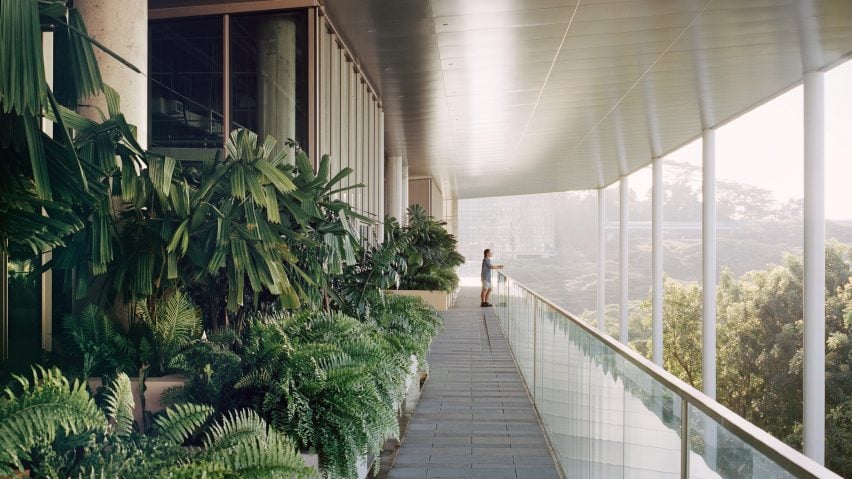
National University of Singapore's SDE4 building is a prototype of sustainable design
Serie Architects and Multiply Architects have built a zero-energy design school in Singapore featuring breezy open-air learning spaces.
The School of Design & Environment 4 (SDE4) claims to be the first new-build, net-zero-energy building in Singapore. The architects described it as "a prototype of sustainable design" that combined its net-zero target with "a revalidated grammar of tropical architecture."
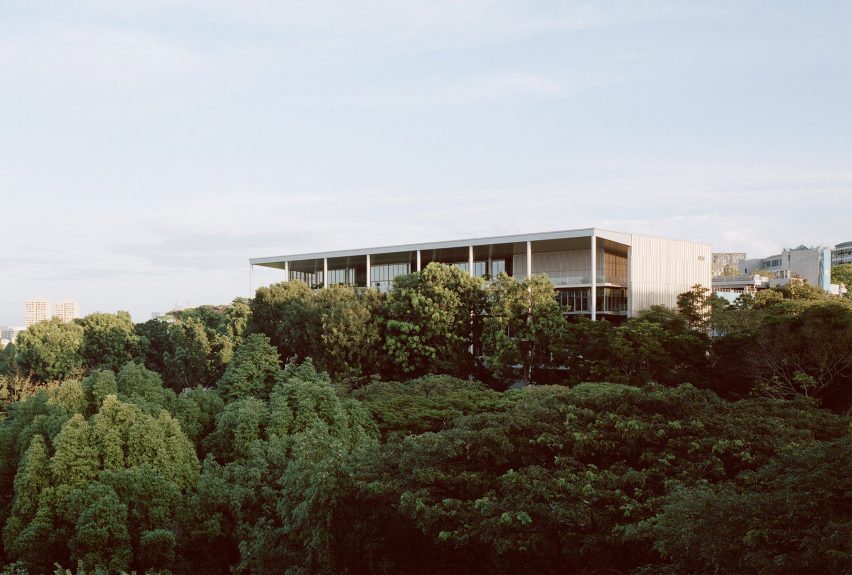
SDE4 provides more than 1,500 square metres of design studio space, along with an open plaza, various public spaces, workshops, research centres, a cafe and a library.
London-based Serie Architects and locally based Multiply Architects won an international competition in 2013 to design the facility, which is part of a wider redevelopment of the university's campus on Clementi Road near the southern coastline of Singapore.
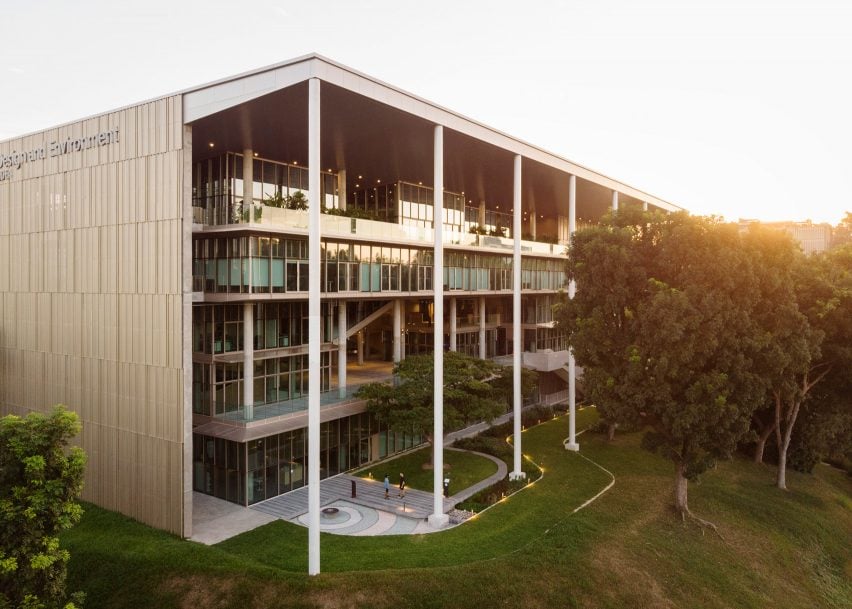
The 8,500-square-metre, six-storey building for the School of Design and Environment was developed together with together with Singapore government-owned infrastructure and urban development consultancy Surbana Jurong.
Its green design is intended to reflect the school's remit to promote design, sustainability and education in southeast Asia.
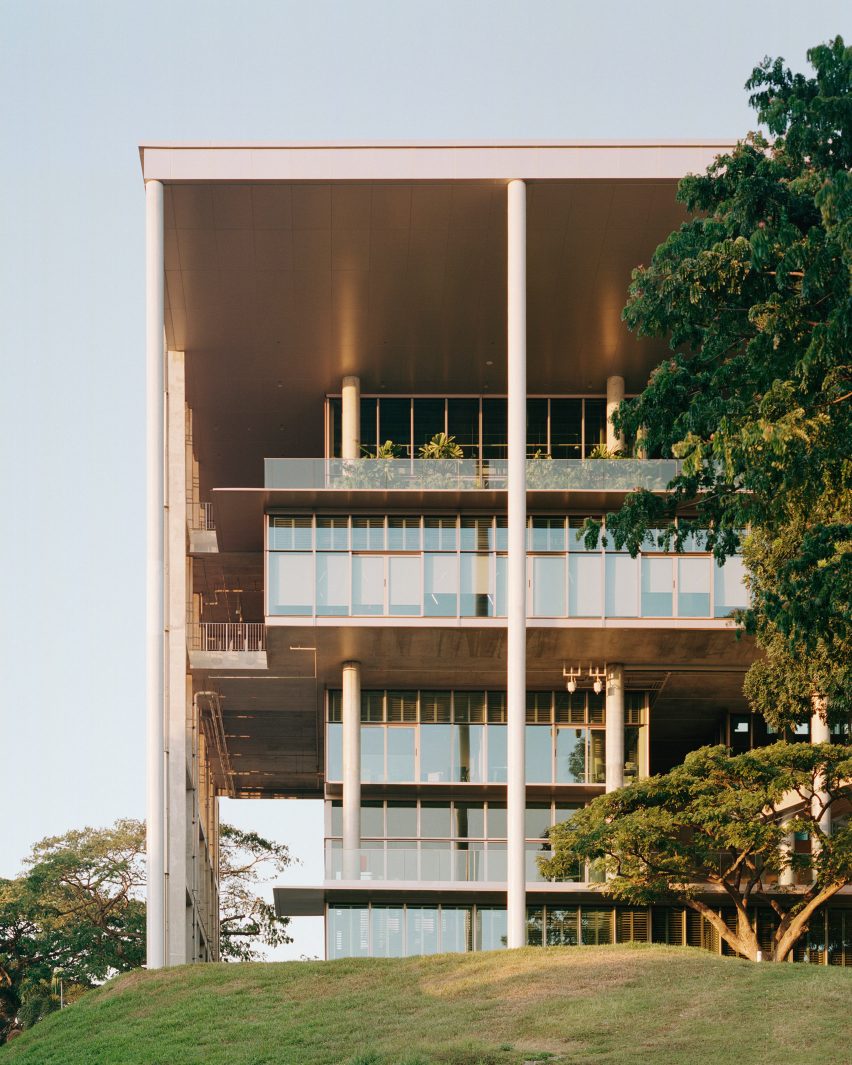
A range of flexible teaching spaces promotes a variety of uses, while enhanced interaction with the rest of the campus is promoted by an open architecture that creates visual and spatial connections with the outdoors.
"One of our ambitions when we started the project was to challenge the notion that a high energy efficient building has to be very opaque," explained Christopher Lee, principal of Serie Architects. "The completed building is incredibly open."
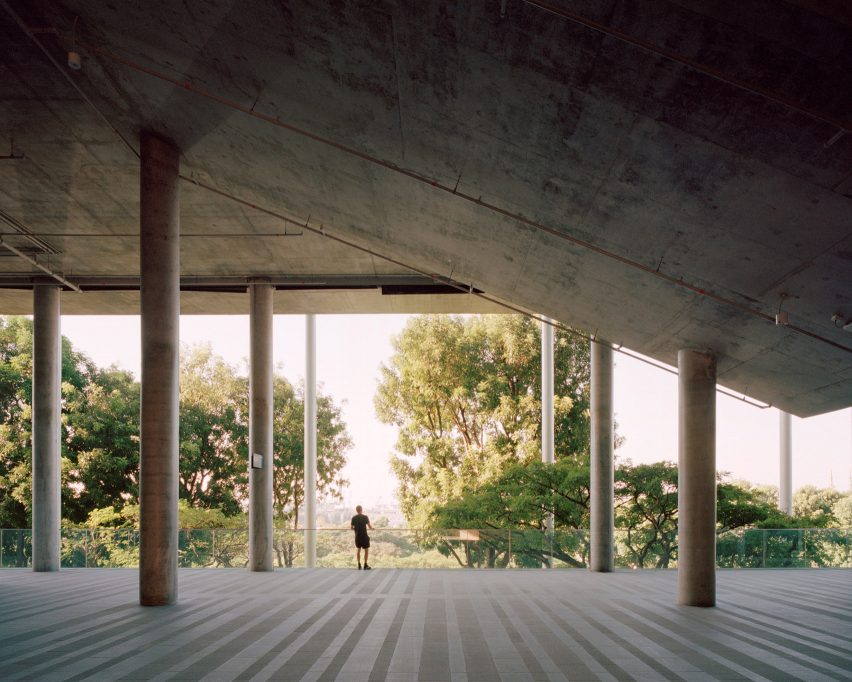
SDE4 comprises a collection of volumes and terraces described by the project team as "platforms and boxes" that define and express the building's programmatic arrangement.
Staircases and corridors extend through the platforms to connect the different boxes, creating a flow of movement around the building that facilitates collaboration.
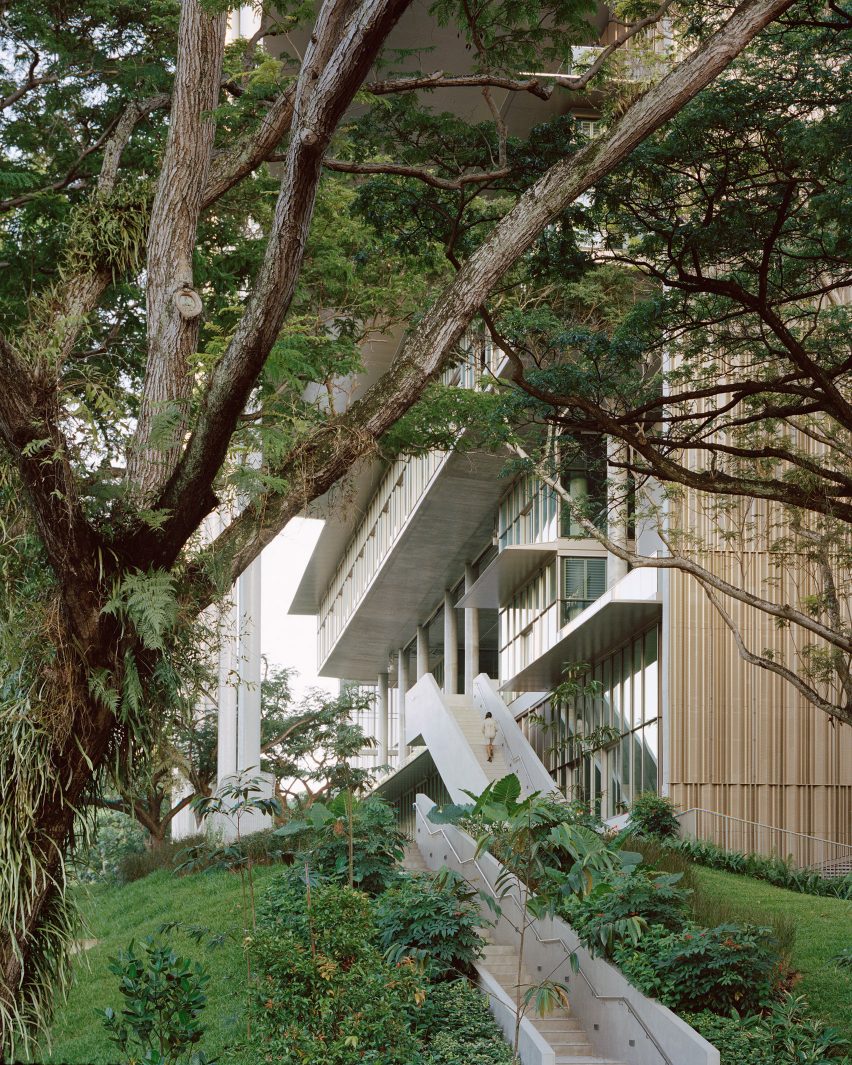
"SDE4's large platforms are configured in a way that promotes interaction and visual connectivity," Lee added.
"We envisioned a very transparent volume in which the outside and the inside spaces are ambiguous; where nature and landscape play an important part, as a backdrop to the building."
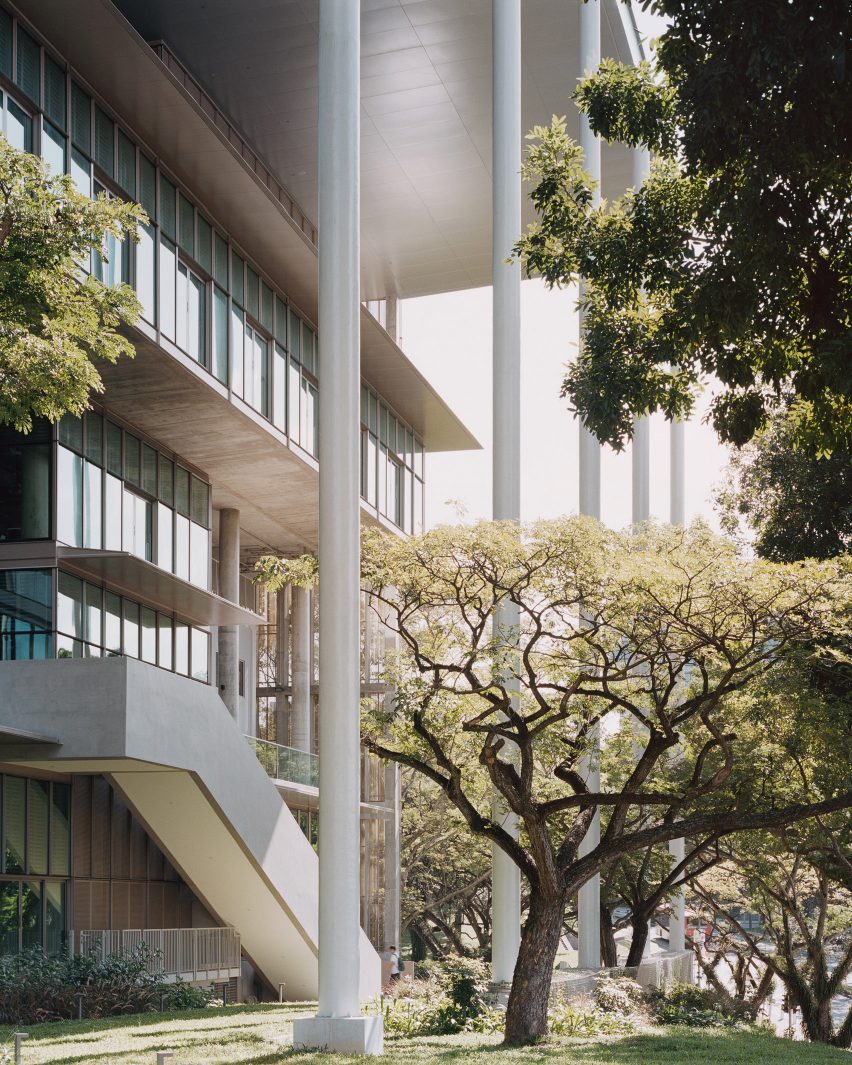
This openness is also informed by sustainability principles borrowed from the tropical region’s vernacular architecture. One example is the verandahs, terraces and balconies that facilitate natural ventilation by promoting cross breezes to flow through the rooms.
The variety of open-air spaces can be used for informal learning. Interstitial areas between the inner and outer skins of the east and west facades are designated for research.
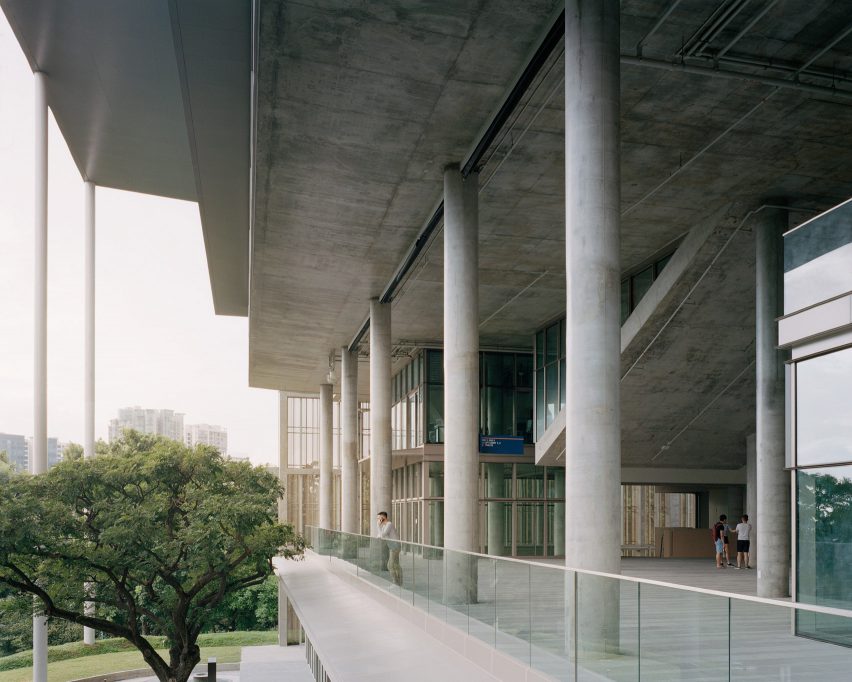
These research zones are set behind a screen of wavy, perforated aluminium panels that allow light and air to permeate. Sections of the aluminium facade can be disassembled and replaced to trial new systems and green building technologies.
The south elevation features a large over-sailing roof that creates a sheltered portico extending across this entire side of the building.
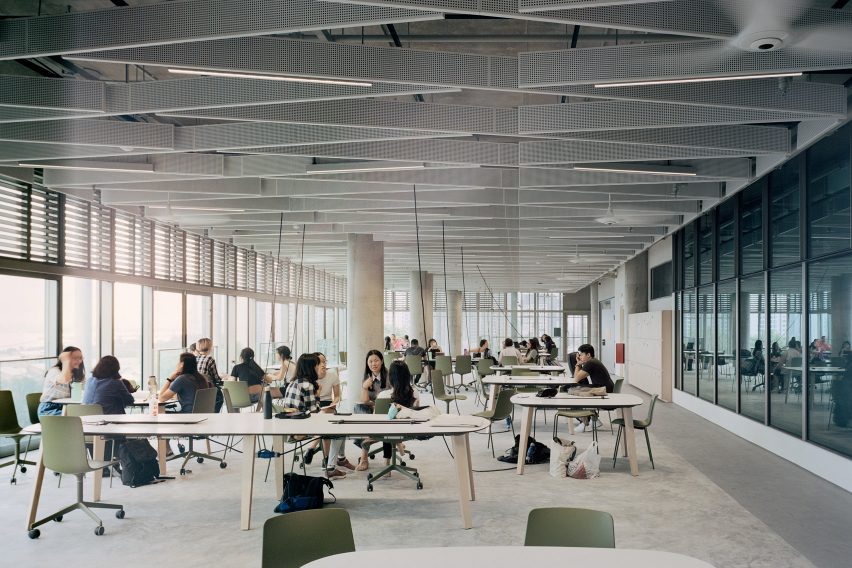
The close relationship between the building and the surrounding nature is emphasised by the integration of outdoor spaces beneath the roof, which also shelters gardens and matures trees.
The gardens are a key part of SDE4's ecological and pedagogical experience. The landscape helps to purify water runoff from the roof and hardscape, providing opportunities to learn about water management, while the introduction of native plants can be used as the basis for environmental education.
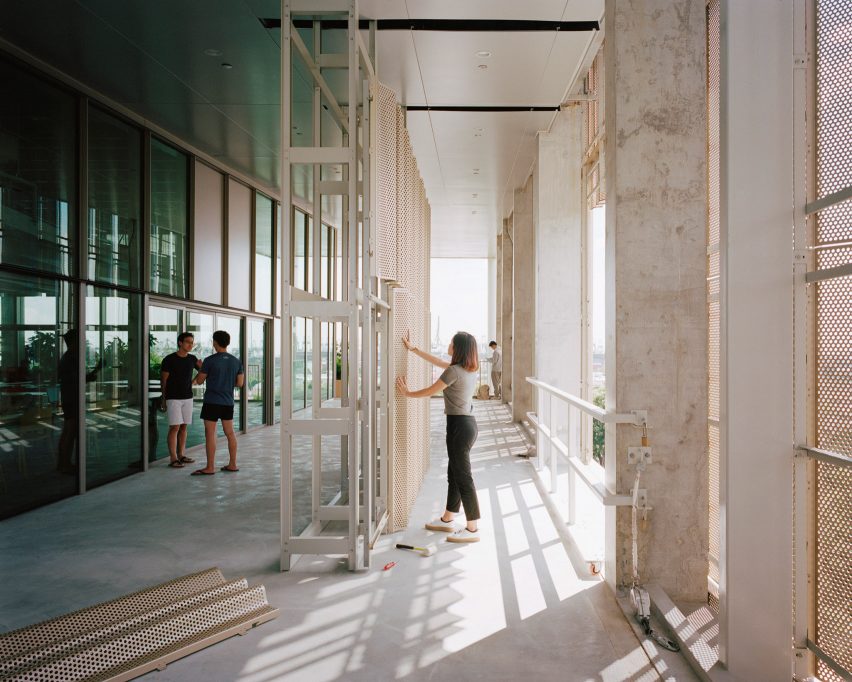
The building features a material palette of concrete, steel and glass, which are used in their raw state to emphasise the pursuit of biophilic design principles. The concrete in particular displays different finishes that give the surfaces a tactility and natural variation.
Other key features of SDE4's commitment to net-zero energy consumption include the integration of more than 1,200 photovoltaic panels on its rooftop.
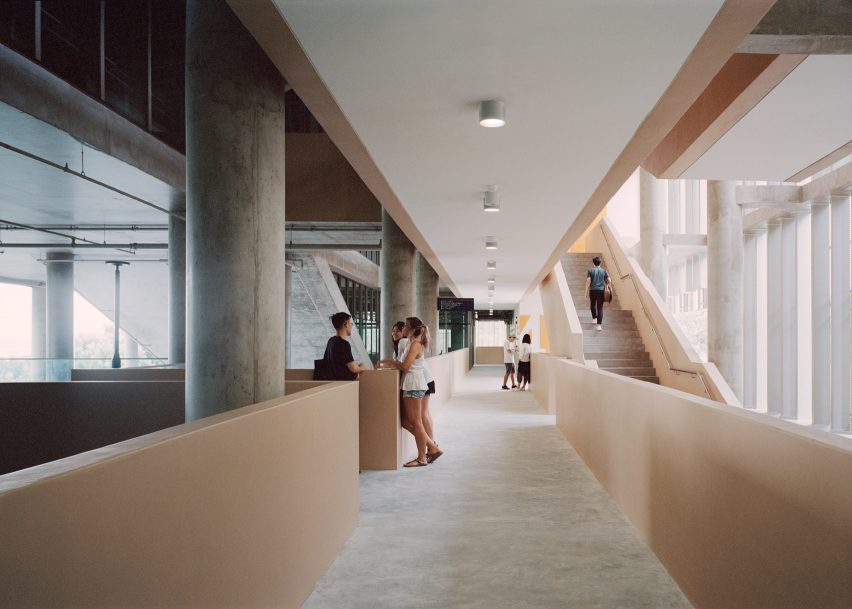
Serie Architects and Multiply Architects have collaborated on several projects in Singapore, including a proposal for a law court with terracotta-clad courtroom surrounded by balcony gardens, and a neighbourhood centre built around a communal terraced garden.
Photography is by Rory Gardiner.